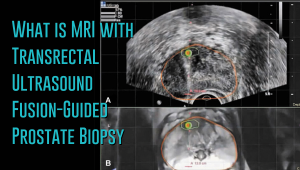My path to urology
Growing up, I wanted to be a veterinarian. My dad was a veterinarian so I wanted to follow in his footsteps. However, everything changed when I was in college. I developed a dislike of working with all kinds of animals and quickly realized veterinary medicine wasn’t the field for me. I had to find a career that I was really interested in. Eventually that became medicine, and urology ultimately became the specialty that I preferred.
I completed my undergraduate studies at the University of Illinois, then went to Stritch Medical School, Loyola University, Chicago, for my medical education. I finished my residency training in general surgery by joining the New England Deaconess Hospital, Harvard Surgical Service in Boston for three years. After that, I received my training in urology at the Lahey Clinic. I became a board-certified urologist with the American Board of Urology, a fellow of American College of Surgeons, and a member of Castle Connolly, prominent doctors chosen through peer reviews and physician-led research.
Areas of expertise
I have practiced urology for more than two decades tackling a wide range of issues and amassing a wealth of experience. I routinely see patients with issues such as recurrent urinary tract infections, enlarged prostate, prostatitis, urinary incontinence, urinary stones, urethral strictures, testicular pain, erectile dysfunction and urologic cancers. But I have particular expertise in treating kidney disorders, kidney stones and prostatic diseases. I have a keen interest in minimally invasive procedures (such laser surgery, laparoscopic surgery and the da Vinci robotic surgery) that preserve renal tissue and minimize postoperative pain and recovery time.
Job satisfaction
Urology is really about helping people with distressing and debasing conditions to recover and enjoy normal lives. As a urologist you get to know your patients, address many kinds of patient issues, and establish an ongoing relationship with them. It is deeply satisfying to see patients who have come to you when in their lowest moments and to be able to help them progress and enjoy normal lives again. In fact, there is a unique sense of joy and gratification that comes with procedures that offer immediate relief to patients with agonizing urinary stones, embarrassing urinary incontinence and other uncomfortable conditions.
But you also feel profound satisfaction with every positive outcome realized in treating life-threatening urologic cancers or debilitating genitourinary problems. With urology, you can go home every day feeling happy and contented with the outcomes you’ve achieved for your patients. Besides, I enjoy being a urologist because the specialty is quite flexible and I can choose the extent to which I am busy every day.
Why Advanced Urology Institute?
AUI has just about everything a urologist requires to excel. The place is always warm and buzzing, with colleagues telling jokes or sharing delightful stories. It is such a relaxed and pleasant working environment that brings out the best from every one of us. The administrative duties have been centralized to enable physicians to concentrate on the most important task — delivering the best possible care to patients. We also have access to the latest medical and surgical equipment, regular opportunities to collaborate with other certified, knowledgeable and experienced professionals, and a thriving culture of compassionate, multidisciplinary approach to patient management. In a nutshell, it’s always wonderful practicing urology at AUI. For more information on the services offered at AUI, visit the “Advanced-Urology-Institute” site.
TRANSCRIPTION:
My name is David Harris and I’m a urologist with Advanced Urology Institute in Fort Myers. I’m from suburban Chicago in the Midwest. My father was a veterinarian and I grew up with aspirations of becoming a veterinarian. However, I found out in college as I was actually getting close to applying that I was allergic to many animals and had to have a rethinking of my career plans. So, I’m happy I went into medicine and I think within medicine I found the right niche in urology.
I went to school through medical school in Chicago and then I trained in Boston in general surgery and urology and met my wife in Boston. We lived in New England for a while and we’ve now been in the south for about 20 years. I went to undergrad at the University of Illinois in Champaign. I did a medical school at Loyola in Chicago. I trained in general surgery at the Deaconess Program at Harvard Medical School and then I trained in urology at the Lahey Clinic in Boston.
REFERENCES:




 Prostate cancer has a new standard of care in MRI-guided fusion biopsy with transrectal ultrasound. While a prostate biopsy has been the only way to get a definitive diagnosis of prostate cancer, it has only been working if cancer cells are identified in the sample tissue. But in some cases, such as when the tumor occurs at the top surface of the prostate or other unusual locations, a biopsy may not give a correct diagnosis. For instance, the standard TRUS (transrectal ultrasound) guided biopsy in which tissue samples are collected from the prostate in a systematic pattern gives a negative result with tumors located in unusual areas of the prostate. About 15-20 percent of tumor locations can be missed by the biopsy needle.
Prostate cancer has a new standard of care in MRI-guided fusion biopsy with transrectal ultrasound. While a prostate biopsy has been the only way to get a definitive diagnosis of prostate cancer, it has only been working if cancer cells are identified in the sample tissue. But in some cases, such as when the tumor occurs at the top surface of the prostate or other unusual locations, a biopsy may not give a correct diagnosis. For instance, the standard TRUS (transrectal ultrasound) guided biopsy in which tissue samples are collected from the prostate in a systematic pattern gives a negative result with tumors located in unusual areas of the prostate. About 15-20 percent of tumor locations can be missed by the biopsy needle.